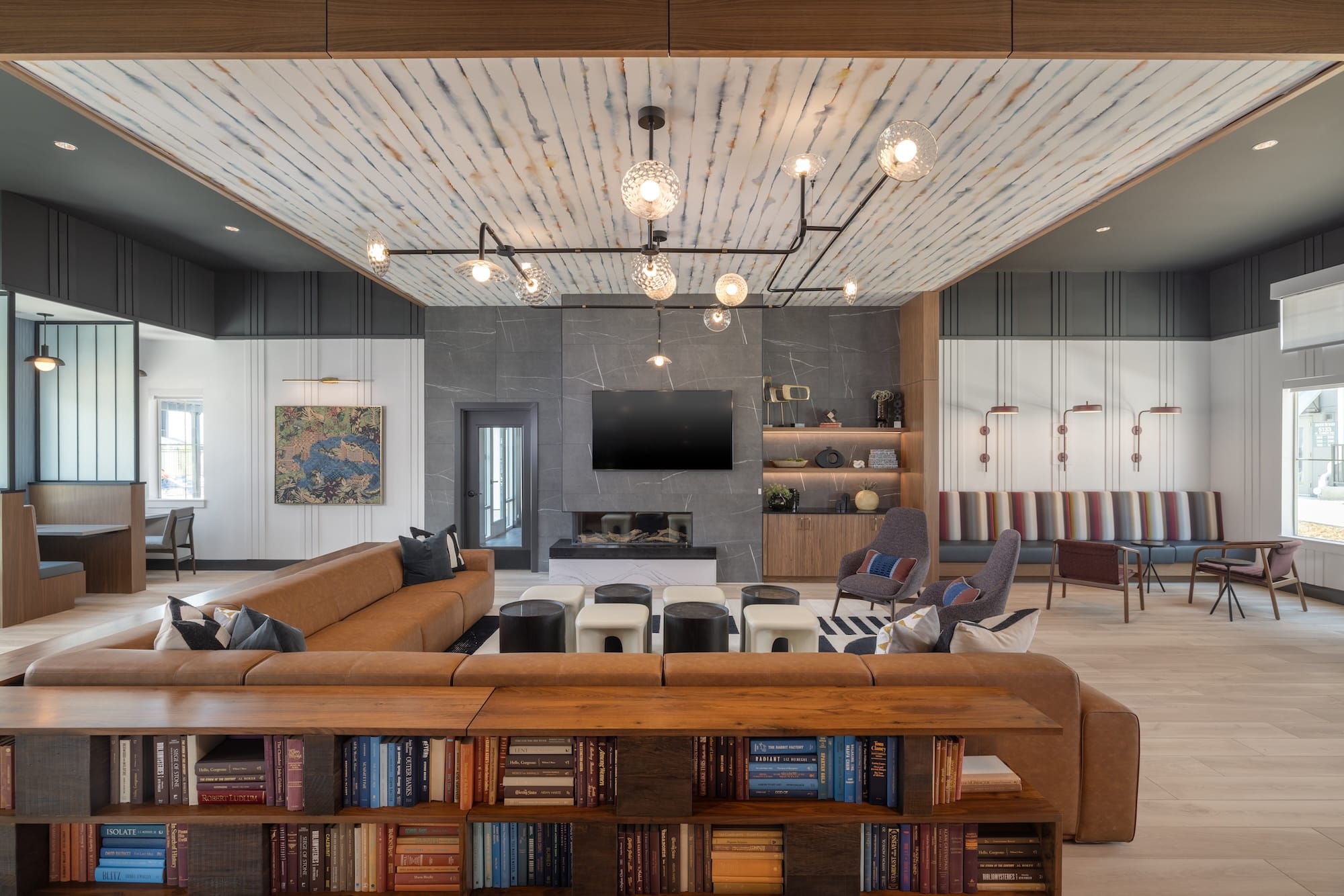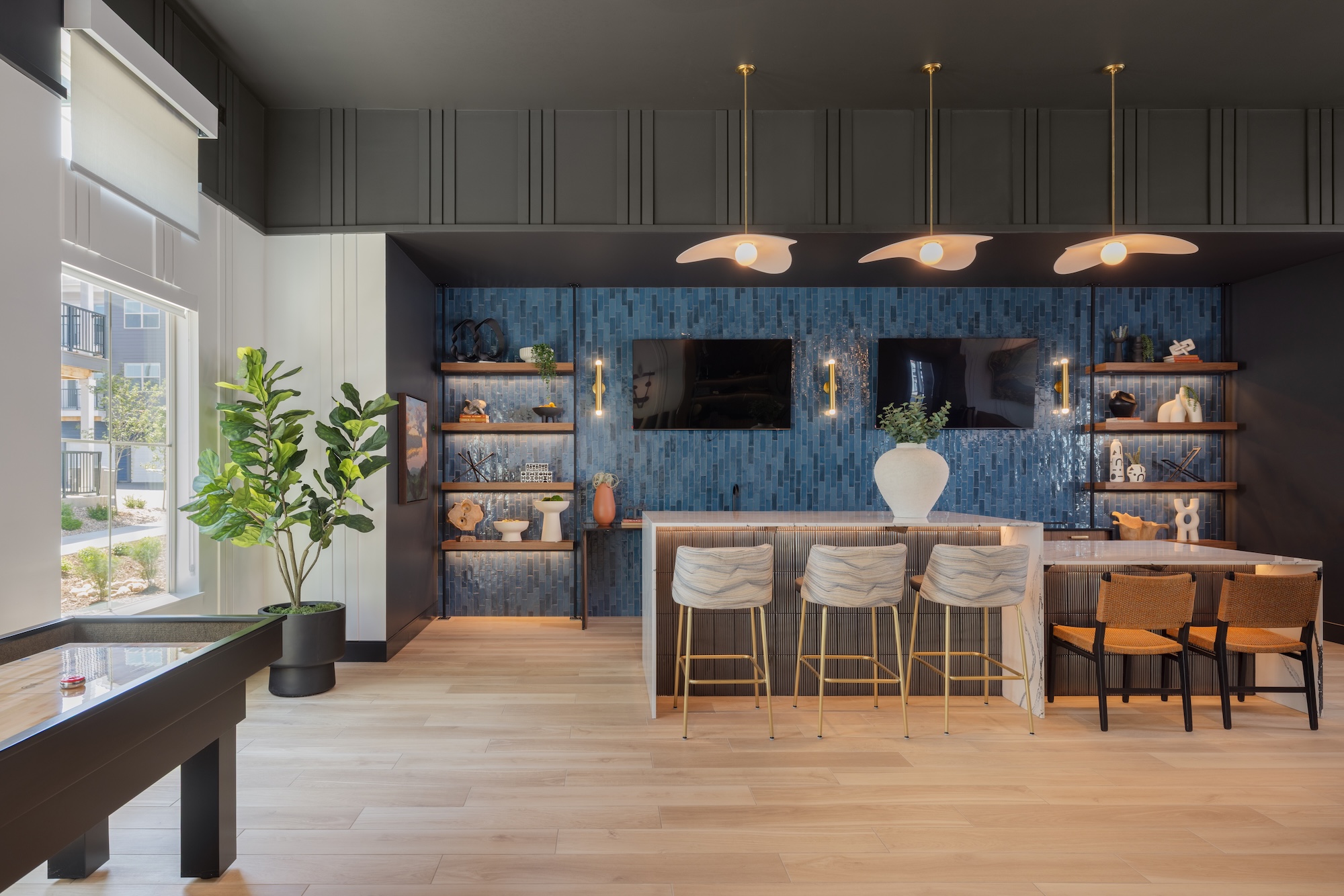The Future of Hospitality & the Client Experience from a Design Perspective
Introduction
In the rapidly evolving landscape of commercial real estate, the hospitality industry stands at a crossroads. The future of hospitality is not just about offering a place to stay but about creating immersive experiences that resonate with guests and integrate seamlessly into the local community. From a design perspective, this involves a multifaceted approach that prioritizes curiosity, collaboration, and a story-based methodology that aligns with the principles of placemaking. It also demands intention, innovation, and courage to push the boundaries of traditional design and create spaces that are both functional and inspirational.
The Importance of Authenticity in the Brand and Community Story
Authenticity is a cornerstone of successful hospitality design. Integrating local culture, history, and traditions into the design and ambiance of a property creates a sense of place and belonging for guests. Senior Interior Designer Laurie Hollm emphasizes, “I think as designers, a big part of our job is infusing brand authenticity and history into a project. Every project has a story to tell, whether that be through the history of its place, the vibrancy of its community, or something else exciting. By embracing these elements, we can provide a much more interesting project and create something much bigger than the design itself; we can create an experience with soul.”
Community Investment and Long-Term Success
Fostering community investment and buy-in is essential for the long-term success of developments. Developers and their project partners must collaborate with local communities to ensure mutual benefits and support. This involves engaging with residents, understanding their needs and preferences, and incorporating their feedback into the design process.
Balancing Tourist and Local Community Needs
Striking a balance between catering to tourists and creating amenities that appeal to the local community is a key challenge in hospitality design. This involves designing spaces that are versatile and adaptable, capable of serving multiple generations and evolving trends.
As Project Interior Designer Portia Kettering notes, “Understanding that good design attracts people and makes them want to interact in a space is crucial. Even if a guest doesn’t have a design background, subconsciously, people know what feels good and where they feel comfortable, which ultimately relates back to a successful design.”
Designing for the Future
Designing for the future requires a deep understanding of emerging trends and the foresight to anticipate the evolving needs of guests and the community. This involves leveraging cutting-edge technology, sustainable practices, and a commitment to continuous improvement. While some trends and practices remain stable through the years, others shift quickly. What worked for hotels and restaurants one year may not bring revenue the next. From absorbing new technologies to adapting to the environment, staying on top of the latest changes is vital to staying ahead of the competition. As the industry continues to evolve and grow, exploring new hospitality trends is crucial for obtaining new market share.
The Guest Experience Through Design – The Hotel Perspective
The guest experience is at the heart of hospitality design. Creating spaces that are welcoming, comfortable, and memorable is essential for fostering repeat visits and positive word-of-mouth. This involves considering every aspect of the guest journey, from the initial impression at the entrance to the final farewell. Thoughtful design can transform ordinary moments into extraordinary experiences, leaving a lasting impact on guests.
Personalization and Customization
Personalized Stays: Hotels are using data and technology to personalize guest experiences. From pre-arrival preferences like room temperature and amenities to personalized itineraries and in-room entertainment, the goal is to make each guest feel unique.
Customizable Spaces: Some hotels are offering guests the ability to customize their room’s design or layout based on their preferences, making the space feel more like home.
Tech-Driven Experiences
Smart Rooms: Integration of IoT (Internet of Things) devices allows guests to control lighting, temperature, and entertainment through voice commands or smartphone apps.
Contactless Technology: The pandemic accelerated the adoption of contactless check-in/check-out processes, mobile room keys, and digital concierge services, enhancing convenience and safety.
AI and Chatbots: AI-driven chatbots are being used to provide instant responses to guest inquiries, book services, and recommend activities, enhancing the guest experience.
Experiential and Wellness-Centric Design
Wellness Amenities: Hotels are incorporating wellness into their design, offering spaces for meditation, yoga, and fitness, as well as in-room wellness features like air purifiers and sleep-enhancing technology.
Local Experiences: Guests are increasingly seeking authentic local experiences. Hotels are curating unique experiences that connect guests with the local culture, cuisine, and environment.
Biophilic Design: The incorporation of natural elements such as greenery, natural light, and sustainable materials helps create a relaxing environment, aligning with the growing demand for wellness.
Sustainability and Eco-Friendly Practices
Sustainable Design: Hotels are moving toward eco-friendly building practices, using sustainable materials, and reducing energy consumption. This not only appeals to environmentally conscious guests but also enhances the overall guest experience by creating a more comfortable and healthy environment.
Zero-Waste Initiatives: Some hotels are implementing zero-waste policies, including reducing single-use plastics, composting, and sourcing local, organic products for their restaurants.
Flexible and Adaptive Spaces
Hybrid Spaces: With the rise of remote work, hotels are offering flexible spaces that can serve as both a work environment and a leisure area. This includes offering co-working spaces, high-speed internet, and business services alongside traditional leisure amenities.
Modular Design: Hotels are incorporating modular design elements that can be reconfigured to suit different guest needs, such as transforming a meeting space into a dining area or an event space.
Social and Community-Oriented Spaces
Communal Areas: The emphasis is shifting towards creating communal areas that encourage social interaction among guests, such as shared kitchens, lounges, and co-working spaces.
Pop-Up Events: Hosting pop-up events like local food markets, art exhibitions, or live music performances within the hotel premises can create a vibrant atmosphere and offer guests unique experiences.
Enhanced Food and Beverage Experiences
Farm-to-Table Dining: Emphasizing fresh, locally sourced ingredients, many hotels are offering farm-to-table dining experiences that reflect local culinary traditions and prioritize sustainability.
Interactive Dining: Some hotels are offering interactive dining experiences, such as chef’s tables, cooking classes, or mixology workshops, which allow guests to engage more deeply with their food and beverage options.
These trends indicate a shift toward creating more personalized, tech-enabled, and experience-driven environments that cater to the evolving needs and preferences of modern travelers. However, that doesn’t mean the traditional ways of experiencing a space will disappear. Keeping that balance is key as we navigate what matters now and what will continue to matter to the generations to come.
The Competitive Landscape and Unique Design Strategies
In the competitive landscape of hospitality, unique design and development strategies are essential for creating authentic experiences and differentiating properties. Successful projects employ a variety of tactics, from leveraging local partnerships to incorporating innovative design elements that reflect the community’s culture and history. Senior Interior Designer Laurie Hollm puts it well, “We as designers can weave in that bigger story and perspective in so many ways, from including material selections that are local and help to emphasize that authentic sense of place, to art and furnishings that layer the history of the project into the design, so the core of the project, stands the test of time.”
Multifaceted Spaces and Economic Growth
In today’s commercial landscape, the emphasis is on creating multifaceted spaces that not only attract tourists but also integrate seamlessly into the fabric of the local community. From innovative hotel and restaurant designs that serve as anchors for mixed-use projects to incorporating authentic local experiences and retail offerings, developers are redefining the urban landscape. By intertwining hospitality with retail, residential, and recreational elements, mixed-use developers are fostering vibrant neighborhoods that cater to the needs and desires of both visitors and residents. Through collaborative partnerships, sustainable practices, and cutting-edge technology, these developments are becoming catalysts for economic growth and cultural enrichment, enriching the lives of all who interact with them.
Urban Infill Projects and Mixed-Use Developments
Urban infill projects and mixed-use developments play a crucial role in the success of the hospitality industry. These projects not only attract tourists but also serve as catalysts for economic growth and cultural enrichment within the local community. By combining hospitality with retail, residential, and recreational elements, developers can create vibrant neighborhoods that cater to both visitors and residents.
Case Studies and Personal Experiences
Examples of successful integration of these principles abound in the hospitality industry. The Hatchery, a multifamily project, integrates the site’s history into its design with a modern fishing theme that pays homage to its original use as a recreational fish hatchery. Similarly, at Stonebridge, the design embraces the building’s history, its owners, and the local mountain and ski culture, creating a unique and authentic experience for guests.
“We’ve worked with many designers—sometimes you have to allow a designer to start from a visionary standpoint and give them leeway within a budget to provide a concept that not only incorporates your goals and vision but also gives them the space to design something that will elevate the space and reflect the research they’ve already done to incorporate the elements that matter. Even with this in mind, Studio 10 delivered on time and within budget. Their visionary approach took us from a 2-star feel to a 4.5-star feel.”
– Erik Cavarra, Snowmass Club
Conclusion
The future of hospitality and the client experience from a design perspective is about more than just creating beautiful spaces. It is about telling a story, fostering community, and delivering experiences that resonate with guests on a deeper level. By prioritizing authenticity, collaboration, and innovation, designers and developers can create spaces that not only meet the needs of today’s guests but also stand the test of time, contributing to the growth and revitalization of the communities they serve.
As we look ahead, the integration of local culture, history, and community engagement will continue to be pivotal in hospitality design. By embracing these principles, we can create spaces that are not only functional and beautiful but also meaningful and transformative. With these concepts in mind, the future of hospitality and the guest experience is bright!
Table Of Content



